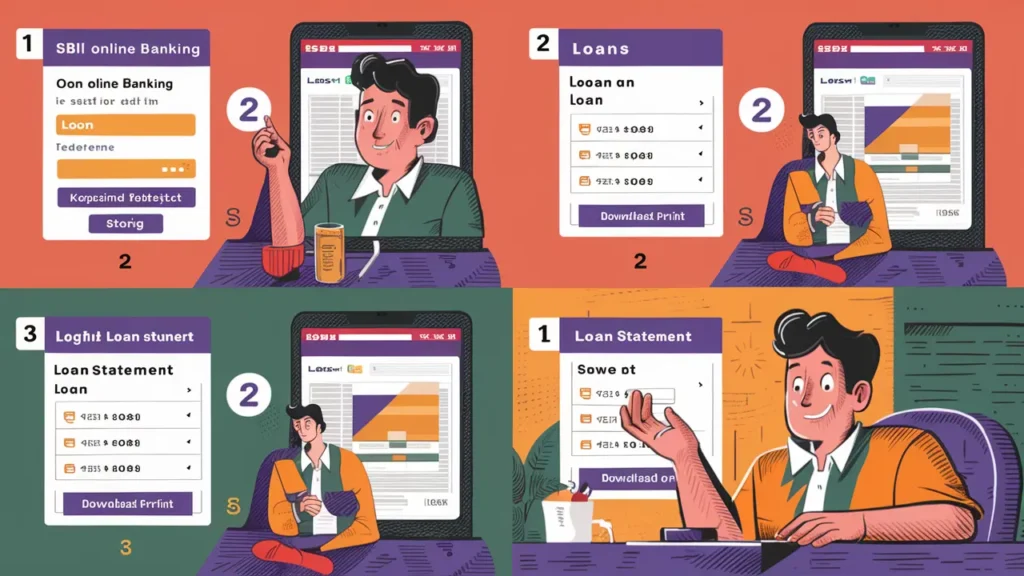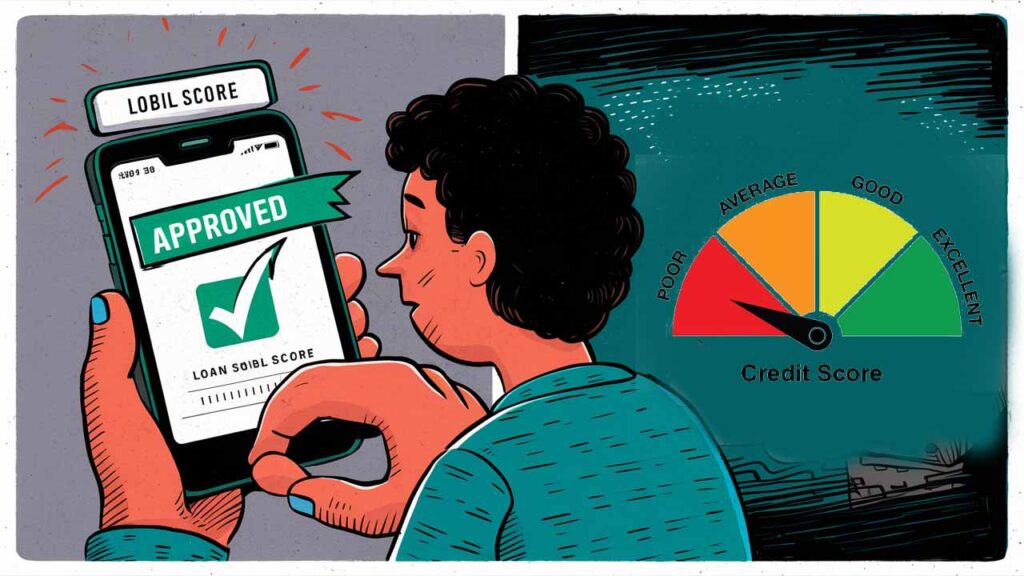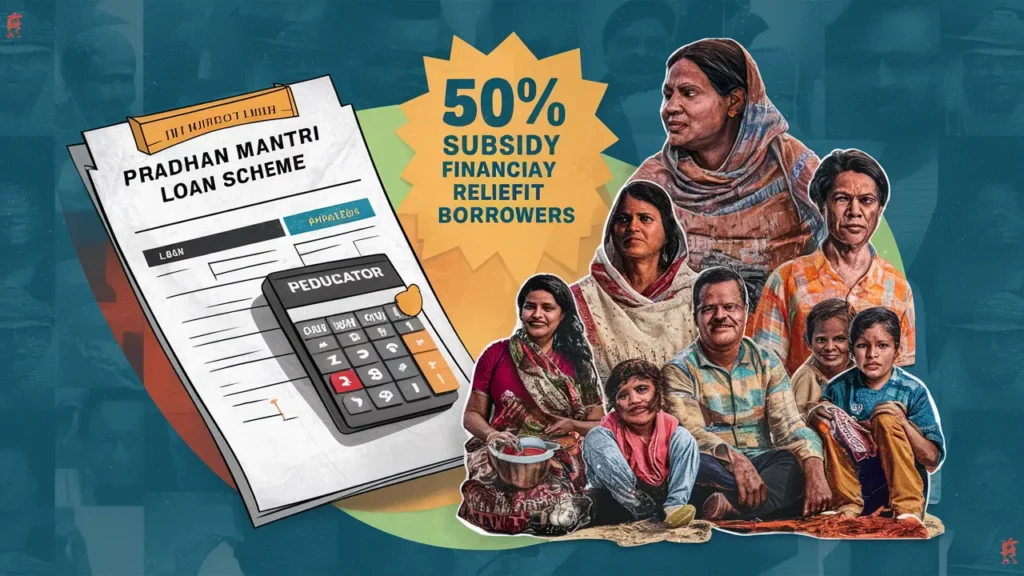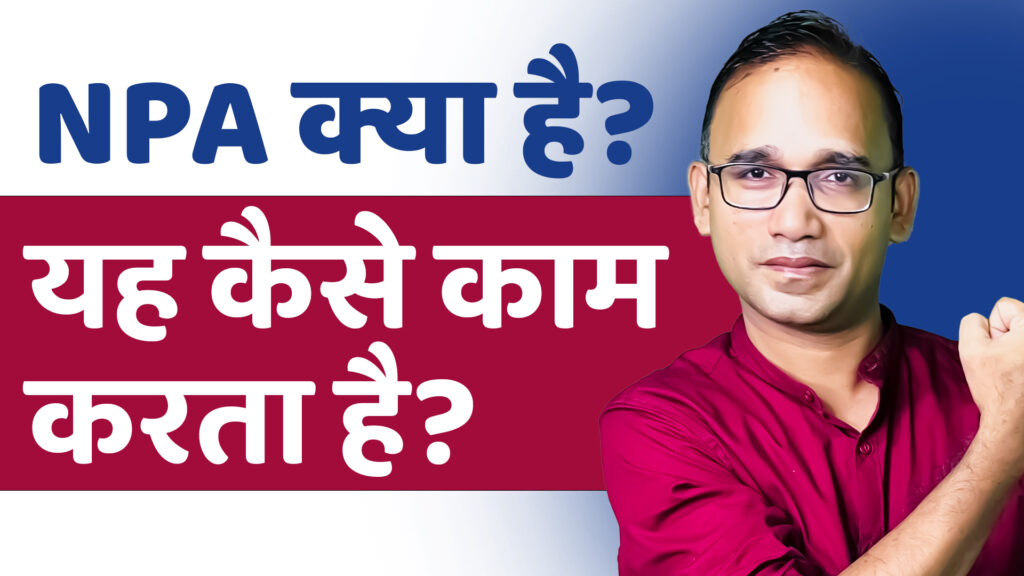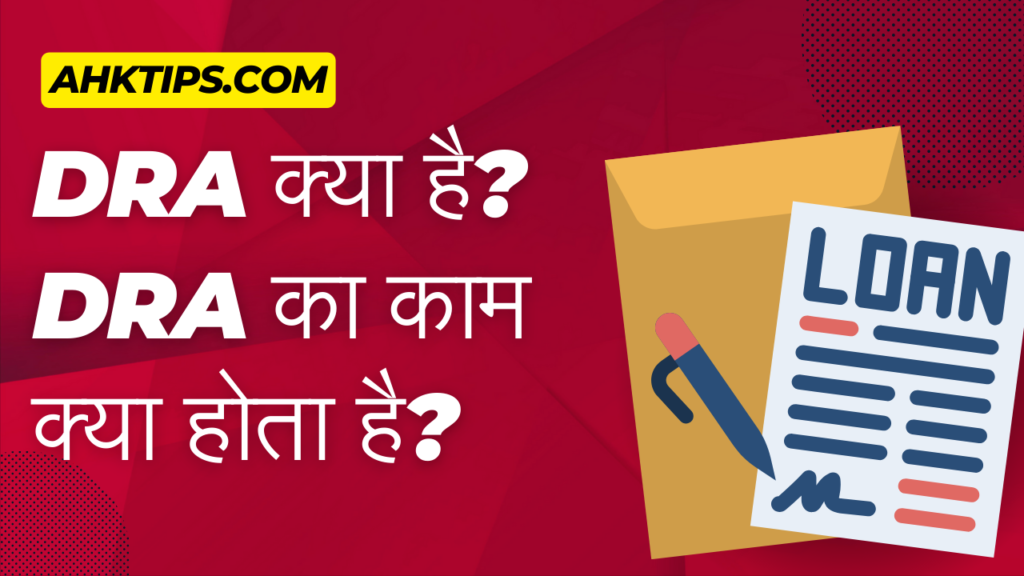Summary
For small businesses in India in 2025, several government-sponsored MSME loan schemes will help business growth, capital for operations, and business revival. Major ones are Pradhan Mantri MUDRA Yojana for collateral-free microloans, CGTMSE for credit guarantee on a non-collateral basis, and Stand-Up India for SC/ST and women entrepreneurs. The likes of ECLGS provide schemes for emergency funding, and SIDBI provides customized lending for equipment, green projects, and growth.
The online process is quick and simple on platforms like Udyamimitra, bank websites, and psbloansin59minutes.com. Simple documents such as Aadhaar, PAN, Udyam registration, and bank statements are all that the applicants need. The article also provides clarity on the eligibility criteria, who can apply and how opportunities for sanction can be maximized. For the MSMEs, all of these are essential tools for business development in the current competitive market.
Top 5 MSME Loan Schemes in 2025 All Small Businesses Need to Know
Small and medium enterprises (SMES) are the backbone of India’s economy. The government and financial institutions will continue to offer credit programs in 2025 to help MSMEs with working capital, expansion, and growth. Small business owners need to be aware of the following top MSME lending programs this year.
Pradhan Mantri MUDRA Yojana (PMMY)
Suitable for: Small and micro businesses
In the MUDRA scheme, firms can avail of loans without collateral up to a certain limit. Shishu, Kishore, and Tarun categories, depending on loan need, bifurcate the system. With easy repayment options, it benefits new as well as existing small businesses.
Credit Guarantee Fund Trust for Micro and Small Enterprises (CGTMSE)
Suitable for: Non-collateral businesses
This scheme provides banks and other financial institutions providing loans to MSMES without requesting security or a credit guarantee. It covers manufacturing and service firms and encourages lenders to assist small businesses that may not have assets to guarantee.
Stand-Up India Scheme
Suitable for: Women and SC/ST entrepreneurs
This scheme extends bank credit to support newly established firms that are started by women and SC/ST individuals. Greenfield units in manufacturing, services, and trading are all eligible to benefit from the funds. Business development and training are also included under the scheme.
Emergency Credit Line Guarantee Scheme (ECLGS)
Best suited for: Those looking for immediate capital
Originally started during the epidemic, the program runs with changed terms through 2025. It enables MSMEs to keep operations, satisfy immediate capital requirements, and control financial stress. Under this program, loans are government-backed guarantees with a collateral-free nature.
SIDBI’s Custom Loan Offerings
Ideal for: Growth-oriented SMES
Tailor-made loan schemes for MSME are provided by the Small Industries Development Bank of India (SIDBI). These include schemes for electronic and environmental projects, working capital funding, and finance for machinery. Quick processing and convenient repayment options are two of SIDBI’s well-known strengths.
Selection of the Appropriate Scheme
Whether expanding a new business, expanding capacity, or managing day-to-day operations, each of these programs satisfies a specific business need. To select the most suitable plan for their business in 2025, business owners must review loan sizes, qualifications, interest rates, and payback terms. Local banks and government websites provide comprehensive assistance for applications and paperwork.
Step-by-Step Guide to Apply for MSME Loans Online in 2025
Intended to allow small business owners access to funds without any delay, applying for MSME loans online in 2025 is an effortless and instant process. The online loan application process comes with ease, speedier approvals, and access to some government-backed lending programs, whether your requirements are for funds to scale operations, purchase equipment, or manage day-to-day expenditures.
Understanding MSME Loan Eligibility
Make sure your company fits within the current definition of an MSME before starting your application.
Who Can Apply
Are companies registered using the Udyam site?
- Sole owners, groups, private limited businesses, and LLCS
- Companies running manufacturing, trade, or services
- Those with current documentation and a good credit record
- Documents Required for Online Application
- Having proper documents handy will assist in avoiding approval delays.
Typically Mandatory Documents
- Applicant’s Aadhaar card
- PAN card of the business owner or the business entity
- Udyam certificate of registration.
- Bank account statements of the past six months
- GST registration, if necessary
- Business plan or project report in case of new businesses
- Past one to two years’ income tax returns, if feasible at all
Selecting the Correct Portal to Apply
Most web pages allow you to apply for MSME loans from multiple banks and financial institutions.
Authorised Platforms to Obtain MSME Loans
- fast-track loans from public sector banks at psbloansin59minutes.com
- Udyamimitra. In: Government-operated MSME help portal.
- sidbi.in: Loan schemes directly from SIDBI for MSMES, individual bank sites such as SBI, HDFC, ICICI, etc.
Online Procedure to Apply for MSME Loans
Step 1: Register on the Selected Portal
Register your mobile number and email ID. For easier access, some portals allow you to log in through Aadhaar.
Step 2: Enter Business and Personal Details
Now fill in the Udyam number, corporate PAN, type of business, business activity, and place. Check that the details are correct according to your official records.
Step 3: Upload Digital Copies of Documents
Scan and upload the required PDF- or JPG-formatted documentation.
Check once more the completeness and legibility of each document.
Step 4: Choose the Loan Scheme and Lender
Choose a loan product—machine loan, working capital, or term loan—that best fits your company’s needs.
You may also select your preferred NBFC or bank.
Step 5: Fill in the Application Form
Review all the details and apply. For tracking purposes, an application ID or reference number will be generated.
The Post-Submission Procedure
As soon as it is submitted, the application is processed automatically. Some systems may request additional paperwork or a light credit check. If approved, the bank will contact you for the following steps. Often, the loan amount is transferred directly to your company account within a few working days.
Advantages of Applying Online
Saves documents and time.
- Many banks are available through one interface.
- Application status tracking in real time
- Rapid loan approval and disbursal turnaround
- Clear process with limited human intervention
Small business owners who desire to grow successfully in the digital-first world of today need to apply for an MSME loan online in 2025, not only practically, but also necessary.
MSME Loan 2025 Eligibility Explained: Who Can Apply and What You Need
An MSME loan in 2025 could be the financial push your small business needs if you want to expand or survive. Before you apply, though, you should be aware of who qualifies and what paperwork is needed. The qualifications and basic paperwork required are broken down in the most straightforward manner in this post.
What Is an MSME Loan?
To help micro, small, and medium enterprises, banks and NBFCS—non-banking financial companies—offer MSME loans, a financial instrument. Designed to assist companies with working capital, expansion, equipment purchase, and other operational needs. These loans are
Particularly under programs like CGTMSE (Credit Guarantee Fund Trust for Micro and Small Enterprises) and PMEGP (Prime Minister’s Employment Generation Program), government measures to support entrepreneurship and small-scale growth commonly underlie MSME loans.
Who Can Apply for MSME Loans in 2025?
People or companies qualified
- Small business owners who are proprietors, LLPS (limited liability partnerships,s) and registered partnerships
- Limited companies involved in manufacture, trade, or services, either privately limited or otherwise
Startups that meet the MSME classification
- Professionals working for themselves and service providers
- Revised MSME Classification grounded on investment and turnover
- Your company has to be classified as an MSME according to the most current definition:
- Microenterprise: Invest up to a modest sum with low turnover
- Small Business: Though still small, greater investment and turnover than microbusiness
- Larger operations within the government’s defined medium range constitute a medium enterprise.
- Classification is done using annual turnover as well as plant/machinery or equipment investments.
Basic Eligibility Criteria for MSME Loan 2025
Lenders will evaluate your application using a few standard guidelines.
Business Vintage
Most lenders want a company that has been open for at least one year. Depending on the loan amount, some can ask for two or three years.
Business Location
The company should be registered and run inside of India. It must have all appropriate licenses and registrations, per state or central laws.
Credit Score
Good personal and commercial credit scores increase your prospects. Most lenders seek a credit score of at least 650 or above.
Financial Stability
Lenders will review your profit margins, turnover, and current debt. They like companies with low existing debt and a good cash flow.
Documents Needed for an MSME Loan Application
Although lenders may have different exact lists, the following are the most often needed documents:
Business Proof
- The GST registration certificate
- Udyam certificates or MSME registrations
- Business PAN and address confirming documentation
- Trade license or any industry-specific registration
Identity and Address Verification
- Aadhaar card
- PAN card
- Voter ID or passport
- Utility bill or rental agreement
Financial Documents
- The last six to twelve months of bank statements
- Income tax returns
- Profit-loss statement and balance sheet—audited or unaudited
- Returns from sales tax, or GST
Additional Requirements
- Form for submitting a loan application
- Photographs the size of a passport
- Quote or invoice (should the loan be for equipment acquisition)
How to Improve Your Eligibility for MSME Loans
Here are quick tips to improve your chances if you intend to apply soon:
Maintain Clean Records
Make sure your company files current taxes, has correct documentation, and valid licenses.
Track Your Credit Score
Check your score often, pay off little obligations, and stay away from defaults. A little delay in credit card payments can suddenly lower your score.
Keep Financials Transparent
Maintaining your books can be done using an accountant or accounting software. Well-kept records enable lenders to better grasp your company.
Quick Tips Before You Apply
- Select a loan amount commensurate with your capacity to pay back.
- Review loan offers from several banks or NBFCS.
- Make sure the Udyam portal updates your company classification.
- Clearly state how you intend to spend the loan.
Securing Business Growth: Benefits of MSME Loan Schemes in 2025
The 2025 MSME loan schemes are designed to give small businesses and new startups robust financial assistance. If you are starting or have a growing business, these loans provide much-needed capital to finance infrastructure investment, manage cash flows, and develop the company. This paper explores why MSME lending schemes are more crucial now in 2025 and how they are driving development.
What Are MSME Loan Schemes?
Structured financial instruments provided by banks, NBFCS, and the government to help micro, small, and medium enterprises (MSMES) are credit schemes. Especially to help small businesses stay competitive, such schemes are structured with flexible repayment options, lower interest rates, and less documentation.
Under MSME financing, the government also finances many projects, offering collateral-free loans and some incentives for specific industries and regions. For firms that earlier used to find it difficult to access traditional bank loans, this makes access to finance easier.
Why MSME Loan Schemes are Important in 2025
Meeting Capital Requirements of Startups and Small Firms
One of the primary challenges for early-stage businesses is often access to finance. By offering timely financing without a heavy collateral burden, MSME lending initiatives bridge the gap.
These funds can be used by startups to hire employees, buy inventory, introduce new products, or establish technological infrastructure. Established companies may employ it for expansion or entering new markets.
Supporting Recovery and Resilience
These programs allow firms recovering from recent market changes and disruptions to restore financial health. The adjustable loan structures aim to lower the debt burden and ensure long-term viability.
Promoting Registration and Formalisation
Most small businesses operate informally even now. They are encouraged to get registered on the Udyam portal so they become eligible for MSME funding. Greater visibility, legal status, and access to additional government support beyond mere credit relief follow therefrom.
Major Advantages of MSME Loan Schemes
Collateral-Free Financing
Unsecured loans are among the major benefits. Small business owners prefer it to be easier and more secure to borrow because they don’t have to pledge assets or property.
Lower Interest Rates
Especially those with government guarantees, most MSME programs offer lower interest rates compared to regular business loans. This reduces the cost of borrowing overall.
Quick Disbursal and Minimal Paperwork
Quicker MSME loan disbursal is a result of improved online processes and digital-first lenders. The majority of applications offer approvals within a few working days and require minimal KYC, business evidence, and income facts.
Flexible Repayment Options
Loan tenure is designed to be retained in the small businesses’ view. Monthly EMIS, bullet repayments, or longer tenures enable you to manage cash flow more effectively.
Government-Supported MSME Loan Schemes to Explore
CGTMSE (Credit Guarantee Scheme)
By providing lenders with a credit guarantee, this scheme enables them to extend collateral-free loan offers. Micro and small enterprises in quest of a minimum amount of loan with minimal risk must consider it ideal.
PMEGP (Prime Minister’s Employment Generation Programme)
This flagship scheme is crafted to render financial assistance to newly introduced micro-units. It has a subsidy component too, which reduces the loan burden for eligible entrepreneurs.
Stand-Up India and Startup India
These initiatives encompass tailored lending options with mentorship assistance and handholding assistance for firms run by underrepresented groups or innovative startups.
How Companies Can Maximise MSME Loans
Plan the Utilisation of Funds
The chance of approval is better when one possesses a specific plan for the investment of the loan. It also accelerates the attainment of your firm’s objectives by steering clear of monetary misconduct.
Keep Financial Records
Lenders will feel more confident in your firm if your books of account—bank statements, ITRS, sales records—are spotless and up to date.
Watch Cash Flow and Repayment
Prompt EMI repayments help build credit history, which may make you eligible for better loan terms in the future or a higher limit.
Conclusion
MSME loan schemes in 2025 are priceless financial support for small businesses that desire growth, innovation, or recovery from financial hardships. From government-backed and bank-led schemes, entrepreneurs now have many alternatives to opt for, availing themselves of finance without excessive documentation and pledging of collateral. Be you are a startup owner, a woman entrepreneur, or a business owner requiring working capital, there exists a scheme for you. Be it through the MUDRA and CGTMSE, SIDBI, or the Stand-Up India scheme, every program forms a stepping stone in the growth of the MSME ecosystem. Understanding the terms of eligibility, deciding upon the optimal scheme, and applying online through genuine portals, small businesses can access the most appropriate funding options and build a secure, prosperous future for themselves in India’s growing economy.
Frequently Asked Questions (FAQ’s)
Ans: An MSME loan is a monetary instrument utilised to facilitate micro, small, and medium enterprises either in operations management or growth.
Ans: Yes, various schemes such as MUDRA and CGTMSE offer collateral-free loans.
Ans: Applications are for registered enterprises, business owners, startups, and professionals meeting MSME criteria.
Ans: Applications can be submitted through individual banks’ websites, psbloansin59minutes.com, and udyamimitra.in or SIDBI.in.



